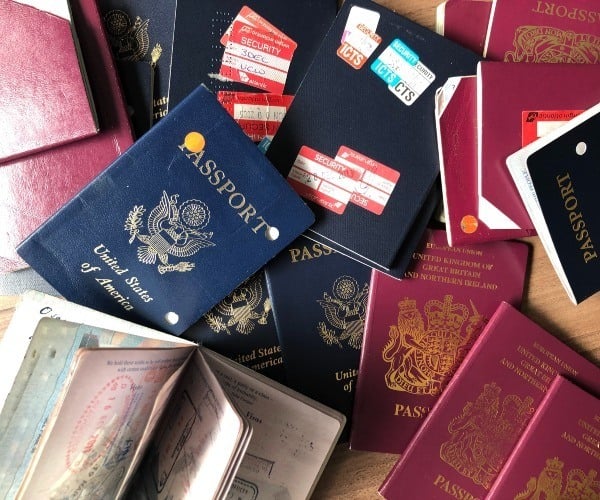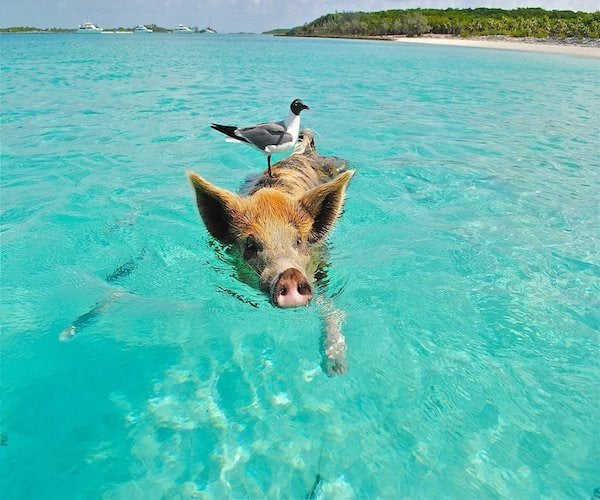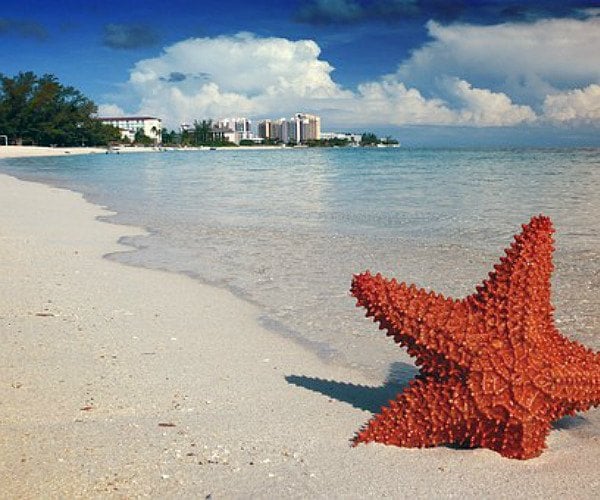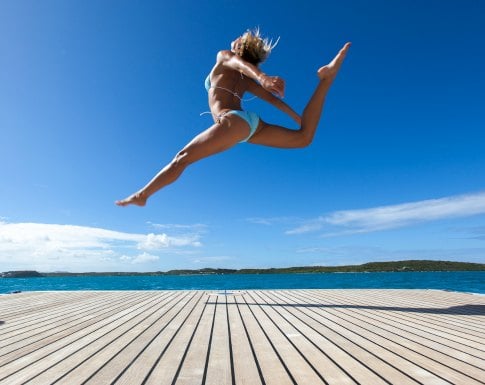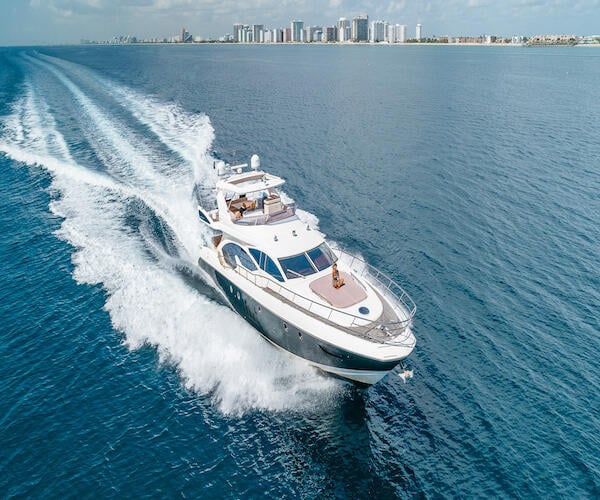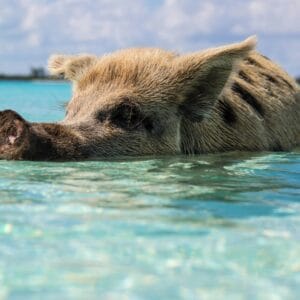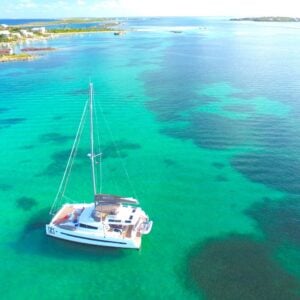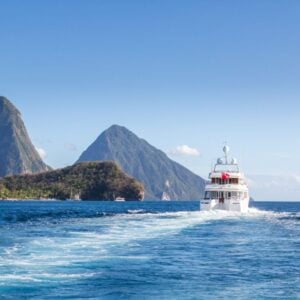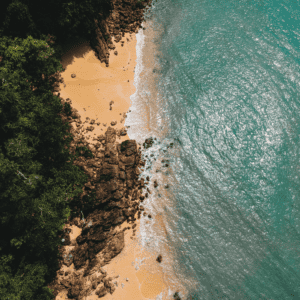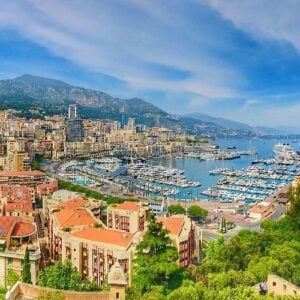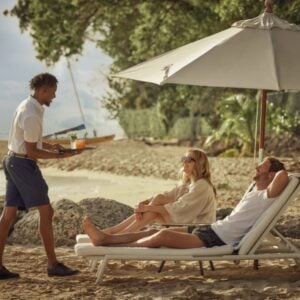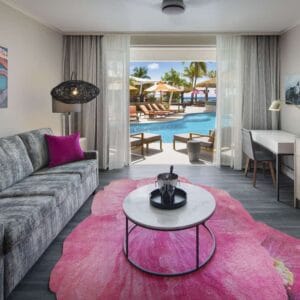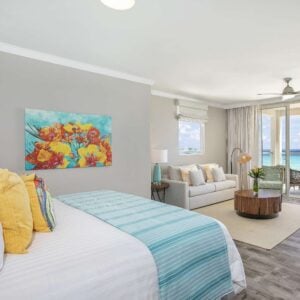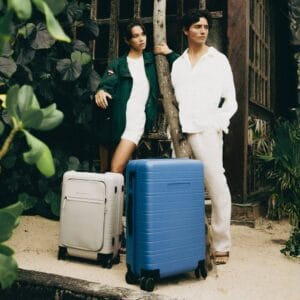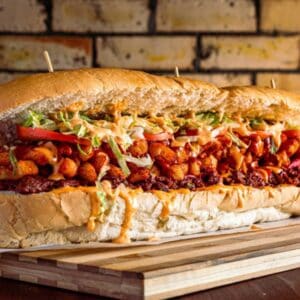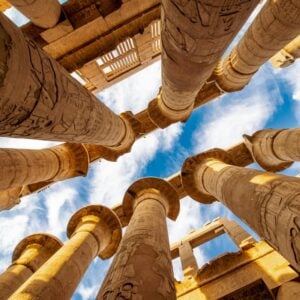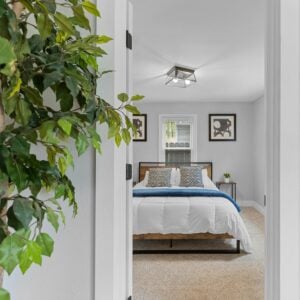Bahamas Travel Guide
Home > Travel Guides > Bahamas Travel Guide

LUXURY TRAVEL
Bahamas Travel Guide
Follow the jet set to some of the world’s most exceptional tropical beaches and immerse yourselves in living Bahamian culture during the daytime before partying through the night in lavish restaurants, casinos and bars. Discover how slavery, war and piracy impacted the Bahamas, and seek out its natural treasures just across – or beneath – the sea.
- Introduction to The Bahamas
- History of The Bahamas
- Where to stay in The Bahamas
- Accommodation in The Bahamas
- Places to visit in The Bahamas
- Things to do in The Bahamas
- Food in The Bahamas
- Getting around The Bahamas
- When to visit The Bahamas
- Events in The Bahamas
- Luxury travel tips
- Language and culture
- Useful phrases
- Weather in The Bahamas
- Useful information
Introduction to The Bahamas
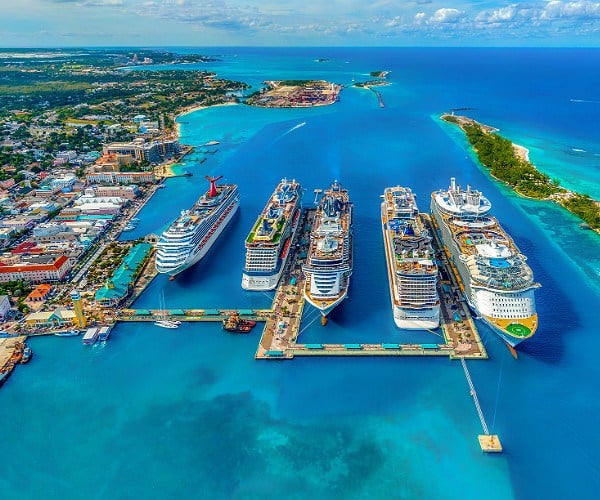
The Bahamas is one of the top luxury holiday destinations anywhere in the world and offers crystal clear blue waters, fine sand beaches in white, gold or pink, lush forests and captivating wildlife both on land and in the sea.
This exceptional natural beauty is spread amongst more than 700 islands and cays and has attracted celebrities from across the world who value its seclusion while enjoying life to its fullest through the luxury yachting lifestyle and luxury resorts.
The festive season from December through to the New Year is the most popular time to visit, and this is when the calendar is packed with events and festivities such as the New Year’s Day Regatta and the carnival-like Junkanoo.
It’s one of the best times to see modern and traditional Bahamian culture while escaping the long dark days of the northern hemisphere.
New Providence is the most populous island and has the greatest variety of galleries, museums, casinos, boutiques and international brands within easy reach of both the hotels and the beaches. Everything becomes even more glamorous on Paradise Island, where the hotel, water park and casino are nestled amongst lush green gardens and five-star restaurants.
To the north, Grand Bahama and its main town of Freeport provide a more laidback atmosphere while still catering to tourists, and it’s a great place to be for those seeking an electric nightlife while having a choice selection of beaches and eco-tourism options for the daylight hours.
The rest of the Bahamian islands are referred to as the Out Islands, or the Family Islands, and have been left untouched by mass tourism for a more authentic and natural experience. The farther south visitors travel, the fewer signs of civilisation there are.
Once at the Inagua Islands, you’ll witness massive flocks of the Bahamas’ national bird, the flamingo, living wild.
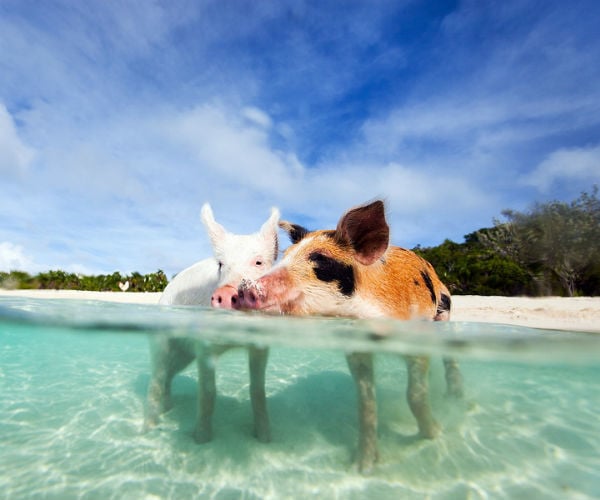
Connections to Miami and the Florida Keys ensure that visitors from the USA and further overseas have quick and easy access to the Bahamas to make the most of every minute.
History of The Bahamas

A tumultuous past and influences from the present have forged the identity of the Bahamas into a vibrant place full of energy.
The first inhabitants of the Bahamas were the Lucayans, who arrived between 500 and 800 AD from islands in the Caribbean. They were the Arawakan-speaking descendants of Taino people originally from South America, and crossed from Hispaniola or Cuba up through the Caribbean to reach Great Inagua Island and Long Island in their earliest migrations by dugout canoes. They then expanded throughout the Bahamas, becoming a population of approximately 40,000 by 1500 AD.
On 12 October 1492, Christopher Columbus landed on the eastern Bahamian island of Guanahani, which he renamed San Salvador. The Spanish used the Lucayans as slave labour over the following 30 years, transporting them to other islands. By 1520, when it was decided to remove the last remaining Lucayans to Hispaniola, only 11 were discovered.
The Bahamas was then abandoned and virtually uninhabited for the next 130 years, before Eleuthera became the site of the first permanent European settlement in 1648. What followed was the deforestation of areas surrounding the settlements to make way for sugarcane plantations. More settlers followed from Bermuda and settled on New Providence in 1666, and the island soon became a hub for commerce with the largest population amongst the islands.
The main livelihoods on the island involved fishing and hunting turtles, seals and whales, cutting hardwoods for lumber, dyewood and medicinal bark, making salt and finding ambergris. By far the most lucrative occupation was salvaging wrecks – and creating them in the first place – from the steady stream of trade ships that passed between the Caribbean and Europe. This heralded the age of pirates; as Spanish salvagers were attacked by Bahamians the Spanish retaliated, leading to the Bahamians hiring privateers. The result was that the Spanish burned the settlements at New Providence and Eleuthera in 1684, and the former wasn’t resettled again until colonists came from Jamaica in 1686.
Nassau became a pirate base from the 1690s onwards, at first by bribing the governor and other officials, then openly as rule of law broke down following the sacking of Nassau by a joint French-Spanish fleet in 1706. More than 20 pirate captains used the harbour at Nassau as a home base before the British re-established control in 1718.
The American War of Independence saw the Bahamas attacked on several occasions by America and its allies. After the American Revolution the American Loyalists that went into exile were issued land grants, and the population tripled in just a few years. Most of the current population of the Bahamas is descended from the slaves these loyalists brought with them, as well as African slaves imported by their descendants. After the abolition of the British slave trade in 1807, thousands more captive Africans liberated from slave ships resettled in the Bahamas as free persons. Escaped slaves from Florida continued to find freedom in the Bahamas in the 19th Century, although wealth and power still predominantly belonged in the hands of those from white European descent. The Bahamas achieved full independence as a Commonwealth realm within the Commonwealth of Nations on 10 July 1973, and today has a flourishing economy through offshore finance and tourism.
Where to stay in The Bahamas
Those who want to be in the heart of the action at Christmas, New Year and all the other major holidays will find Nassau and Paradise Island the place to be. On Grand Bahama, you don’t have to travel far from your accommodation to reach the scenic ‘Garden of the Groves’ or the Lucayan National Park, and once you’ve seen what nature has to offer on land, it’s time to visit the beach and explore the water. The bars and clubs along the beachfront will provide refreshments through the day and a party atmosphere through the night.
Harbour Island has a range of accommodation at Dunmore Town for visitors who want to be close to the famous Pink Sand Beach, and those who don’t mind golden white sands instead will have their pick down the Eleuthera coast.
The Exumas is a string of cays each offering a sun-blessed idyll for travellers to rest and take life at a slower pace. Both Staniel Cay adjacent to Pig Beach and Great Exuma provide accommodation.
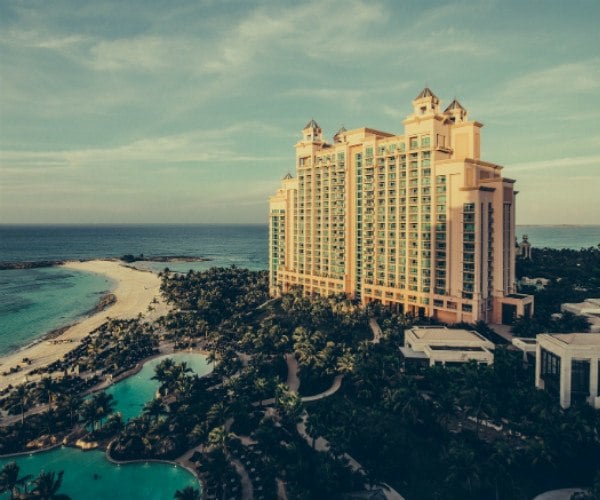
‘Cat Island’ is named after pirate Arthur Cat for burying his treasure here. It’s also where you’ll find the highest point in the Bahamas, Mount Alverina, at 62.8m/206ft. The ruins of the famous monastery ‘The Hermitage’ make a great photo opportunity along with the views.
San Salvador Island is a wonder for snorkelers and Scuba divers, where there are 50 sites to choose from for wrecks, reefs and memorable encounters with local marine life. Far away from New Providence, you’ll find few people other than diving enthusiasts to share the island with.
Couples and nature lovers who want to avoid the crowds and spend quality time creating lasting memories have the picturesque and remote Mayaguana to consider. Let time slip by while snorkelling, sunbathing or enjoying a stroll together under the fiery sunset.
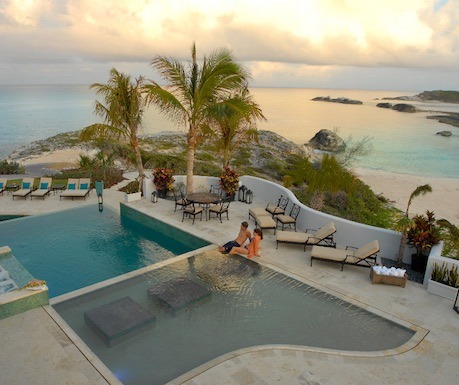
Accommodation in The Bahamas
The Bahamas has accommodation to suit every itinerary, from the glamorous five star hotels of Paradise Island to beach huts designed with all the comforts and amenities a modern traveller could desire – you’ll only lose the Wi-Fi if you want to! If you intend to visit during the peak season from December through to April, it’s best to book ahead, and the further in advance the better to avoid losing out on your first choice.
Most of the accommodation is concentrated around Nassau, The Abacos and Eleuthera, becoming sparser the farther south your itinerary takes you. If you want to leave the rest of the world behind, a luxury yacht charter gives you the freedom to roam, and you can enjoy first-class service from the professional crew while your Captain cruises to the best locations only accessible by water.
Places to visit in The Bahamas
The Bahamas has so many impressive attractions that it’s impossible to see and do it all in one visit, but some of the most famous are a good place to start. Nassau on New Providence is the heart of culture in the Bahamas and there are plenty of museums and galleries to fill any (unlikely) rainy day. More likely you’ll be sampling the products of John Watling’s Distillery and visiting the forts around town.
Ernest Hemingway made the Bimini Islands his home from 1935 – 1937 and the white sand shores and topaz blue waters are just as inviting now. Snorkelers and Scuba divers can discover a whole other world under the water, where the Bimini Road lies – what some believe to be a road to the Lost City of Atlantis.
Eleuthera is known for the pink sand beaches at Harbour Island, and the Abacos have fantastic snorkelling and Scuba diving sites suited to all ages: ‘The Catacombs’ near Green Turtle Cay is just 12m/40ft below the water and offers a great opportunity to see turtles and eagle rays gliding around the fish-teeming coral.
Staniel Cay amongst the Exumas is an ideal launching point to visit another stunning snorkelling and Scuba diving site: Thunderball Grotto. Afterwards, warm up and rest on the Pirate Beach, or cross over to Pig Beach to watch the animal inhabitants at play.
Long Island is the home of many a scenic white sand beach as well as ‘Dean’s Blue Hole’, now the world’s second deepest blue hole after ‘Dragon Hole’ was discovered in the South China Sea in 2020.

If you want to take life at a slower pace without leaving behind civilisation entirely, Rum Cay is a great balance of water sports including kite surfing, paddle boarding and snorkelling, while the colourful reefs and thriving marine life attract fishing enthusiasts and Scuba divers from across the world. Dry off on the soft sands or work up an appetite visiting the historical ruins and hiking the island trails.
The Bight of Acklins is only accessible by boat, and the shallow crescent bay is an enchanting place for young swimmers to dive down for sand dollars and play in the gentle waves. Bonefishing, snorkelling and Scuba diving are all popular activities here, followed up by an afternoon of sunbathing and refreshments.
The farther south you travel, the fewer things there are to distract you from nature’s incredible beauty. Mayaguana is a peaceful retreat from modern life for many and a magical honeymoon retreat. Lastly, the Inagua Islands are a paradise for nature, and birdlife in particular is thriving with more than 140 endemic and migratory species feeding and nesting. Keep a sharp eye out for the tiny hummingbirds that flitter amongst the plants, and you’ll need no help spotting the bold and brash flamingos, which hold the title of the Bahamas’ national bird.

Things to do in The Bahamas
The Bahamas has long been welcoming to its shores tourists from the world over, and as a result it has myriad attractions catering to the thrill-seekers, shopaholics, hedonists and nature lovers.
Water sports are a primary reason many come to the Bahamas, particularly for the amazing scuba diving experiences for beginners through to advanced divers: Swim with dolphins, pigs, rays and turtles around coral reefs, have up-close encounters with friendly sharks, drift dive with the nocturnal inhabitants or swim through ancient wrecks.
Those who want to keep their heads above water can harness the wind for kite surfing, bound across the waves on a jet ski or kayak and paddleboard along the shore.
Paradise Island has plenty of luxury boutiques and international brands to choose from, numerous top quality restaurants and a grand casino for heart-racing action after nightfall.
The Bahamas has a tumultuous history that has left behind powerful stories and impressive landmarks scattered across the islands and cays. Whether you’re a family of four or celebrating a golden anniversary, it’s worth taking the time to explore and find some of these hidden treasures away from the popular landmarks. That being said, Fort Charlotte, the Queen’s Staircase, and the Cloisters are all in Nassau nestled amongst museums and galleries for a full-on culture day-trip.
The islands have plenty of coastal trails that are ideal for exploring by bike or on foot, and swimmers, snorkelers and water sports enthusiasts will be in their element with excellent visibility in the crystal clear seas. Visit reefs and encounter rays, turtles and dolphins along with thousands of colourful fish species and big game fish that would make a fantastic freshly caught lunch on a fishing trip.
Best of all are the beaches. The pink sand beach at Harbour Island is the most famous of its kind in the Bahamas, and the perfect place to end the day with a romantic stroll at sunset or even dinner with your toes dipped into the glassy seas.
Food in The Bahamas
Visitors to the Bahamas will find flavourful variations on familiar dishes, along with new temptations made using fresh ingredients taken straight from the land and the sea.
While some of the dishes can also be found farther afield in the Caribbean, others are local specialties that will add some memorable culinary magic to your trip.
For a unique treat you probably won’t find back home try some of the conch-based creations, lionfish and rum-infused snacks and sides.
Have your fill of spicy minced crawfish and conch fritters chased by a ‘Goombay Smash’ cocktail before finishing the meal with ‘Guava Duff’, a cake made using guava fruit and covered in a butter rum sauce.

The Bahamas produces some of the world’s finest rum varieties, and it’s possible to add some taster sessions at the distilleries to your itinerary.

Getting around The Bahamas
There’s no limit to how far you explore in the Bahamas with the range of transport options available. For a start, visitors find reaching the Bahamas easy by flying in to the international airport at Fort Lauderdale and then taking a connecting flight to destinations such as Nassau or Grand Bahama.
To avoid the crowds, visitors can charter a private flight or use national airline Bahamasair to reach some of the smaller locations which include Abaco, Cat Island and Long Island. Many cruise ships and charter yachts also board and disembark in Fort Lauderdale for the convenience of their guests.
Once in the Bahamas it’s possible to get around Nassau and Freeport on the private minibuses, which and are treated as public transport and follow routes throughout the day. In the Out Islands there is no bus transportation, and hotel shuttles, taxis or a private chauffeur are the best way to and from your accommodation, particularly after dark.
Taxi rates are fixed by the government and depend on the distance travelled in Nassau and Freeport, whereas prices are negotiated in the Out Islands. There is no provision for credit cards so be sure to have some cash on hand to pay at the other end.
Another option for Nassau and Freeport is car or motorcycle rental, however few tourists choose this option as the roads can vary in condition, particularly the further away from the city centre you travel. If you’re still undaunted, be aware that it is much easier to drive in daylight hours and that Bahamians drive on the left.
Travel by water comes in a few forms: First there are the ferries that have daily routes connecting Nassau to Paradise Island (which can also be accessed via the bridge), the Abacos, Exumas, Eleuthera and Andros.
The second option is the colourful and traditional mail boat, which was the only way to travel between Nassau and the Out Islands before the runways were created. This very leisurely way of getting around could certainly be a memorable experience depending on what the cargo may be: Letters, casks of rum or even live animals.
The final mode of transport is luxury yacht for a week or longer of cruising, and you won’t be sharing your space with strangers. These vessels range in size from small sailing yachts for couples up to massive 100m+/328ft+ mega yachts that have every luxury you can imagine on board. Most settle for comfortable accommodation, at least one indoor and outdoor lounging and dining area, sumptuous sunbeds and possibly a Jacuzzi to rest and enjoy a cocktail and the company at the end of the day. The professional crew includes a chef catering to all dietary requirements in the group, and luxury yachts also come with a selection of water toys that might include jet skis, water skis, snorkelling equipment and Scuba diving gear – perfect for the shores of a golden sand bay on a remote, uninhabited paradise.
When to visit The Bahamas
The weather in the Bahamas is at its best from mid-December until mid-April, which also coincides with the peak tourism season. Temperatures are a delightful 24°C/75°F on most days, however evenings become considerably cooler and a warm outer layer is recommended to keep off the breeze.
Spring Break can be a boon for those who want days packed with music festivals and other events, however prices also increase to reflect this influx. Those looking for a more laid-back pace should visit outside of public holidays, or choose a luxury yacht charter to access beaches, fishing spots and snorkelling and Scuba diving sites far from the well-beaten path.
In comparison the summer season from May until October has a wonderfully warm average of 28°C/82°F during the day but a greatly increased chance of rain. The Atlantic hurricane season also runs from early June until the end of November, and as the Bahamas sits within the hurricane belt it is recommended to avoid visiting during this time.
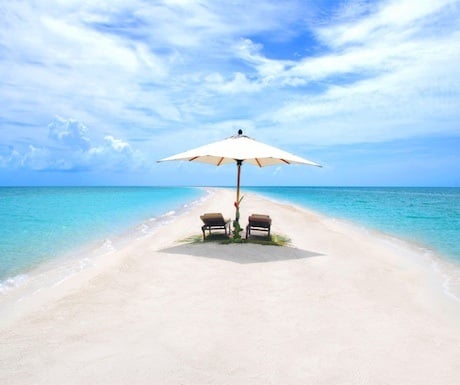
Events in The Bahamas
Here is a comprehensive list of public holidays and festivals in The Bahamas.
January
Junkanoo
New Year’s Day Sailing Regatta
Annual Bahamas Wahoo Championships (Berry Islands)
February
The Mid-Winter Wahoo (Bimini)
Farmer’s Cay Festival
March
Bacardi Billfish Tournament (Freeport)
April
Bahamas Family Island Regatta, George Town (Exumas)
Bahamas Billfish Championship
Bahamas White Marlin Open (Abacos)
May
Long Island Regatta (Salt Pond, Long Island)
June
Eleuthera Pineapple Festival (Gregory Town, Eleuthera)
July
Annual Racing Time in Abaco (Marsh Harbour, Abaco)
Independence Week
August
Emancipation Day
Cat Island Regatta
September
All Abaco Sailing Regatta
October
Discovery Day
North Eleuthera Sailing Regatta
Great Bahamas Seafood and Heritage Festival
November
Guy Fawkes Day
Bimini Big Game Fishing Club All Wahoo Tournament
Annual One Bahamas Music & Heritage Festival
December
Junkanoo Boxing Day
Luxury travel tips
For those seeking out the finer things in life, the Bahamas will provide from the very start of your trip: Fly in by private jet to one of the airports, where a chauffeur will be waiting to take your group on to your accommodation. Stay in a five-star hotel right in the heart of Paradise Island, or sail away on your own luxury yacht charter with a crew dedicated to providing first-class service.
Nassau is replete with spa resorts close to the golf courses, and guided VIP experiences can be arranged to some of the top attractions. Savour the sunset views along with the food at some of the top quality harbour-side restaurants, and after dark try your luck in the luxurious Atlantis Casino.
Itineraries can be tailor-made to the group’s interests to ensure that everyone ends the holiday completely content with time well-spent.
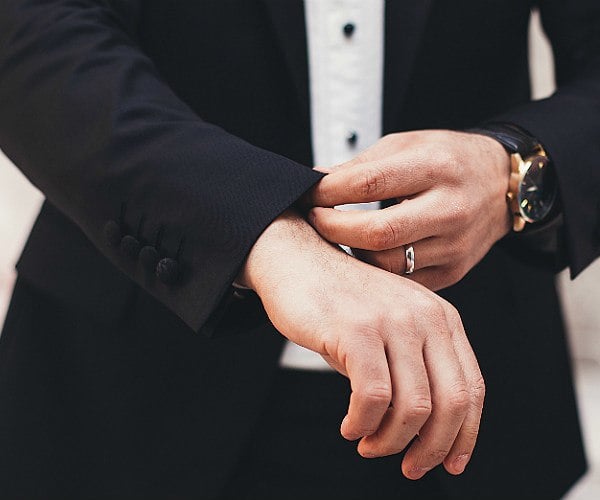
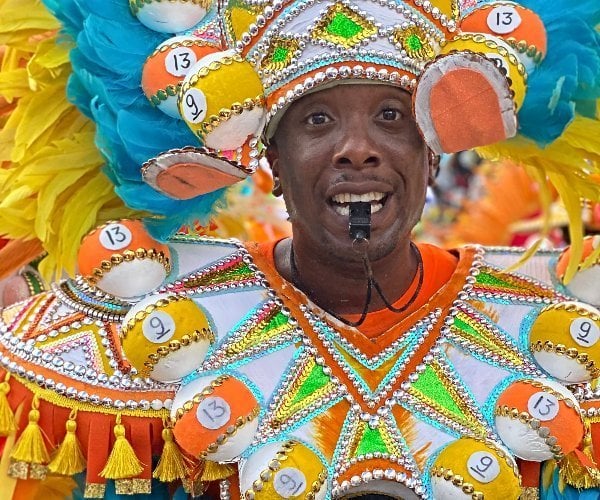
Language and culture
Bahamian culture is a blend of African, British and American influences, with British English as the official language of the Bahamas and many inhabitants speaking with the Bahamian dialect.
Life is lived to the fullest and celebrated through brilliant colour, delectable dishes and foot-tapping beats. No time is this joyous attitude more on show than during Junkanoo, a street parade that takes place on Boxing Day (26th December) and New Year’s Day (1st January).
Useful phrases
British English is the official language of the Bahamas, however there are some unique phrases in the Bahamian dialect you won’t hear anywhere else. Here are some examples you might encounter on your travels.
- What da wybe is? – What’s up?/What’s happening? ‘Wybe’ means problem/issue and ‘wybin” is an argument.
- Een nothin’ – ‘Nothing much’; a typical reply to “what da wybe is?”
- Tanks – Thanks
- I straight! – It’s all good!
- It’s jam up – It’s crowded/full
- Well mudda sick – You’re kidding!
- Jitney – Bus
- Switcha – Lemonade, often made with limes instead of lemons
- Bey – A person, male or female.
- Conchy Joe – A popular Bahamian cocktail and a term used for any native or long-time resident of the Bahamas
- Leg short – too late
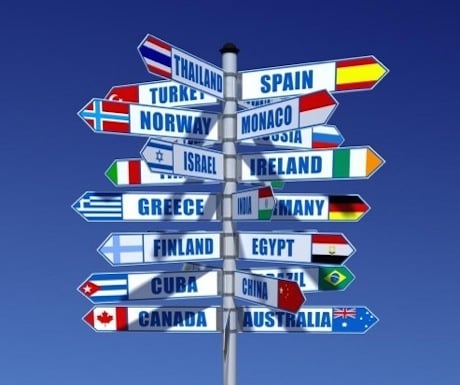
Weather in The Bahamas
Visiting The Bahamas soon? See below for the latest weather forecast for The Bahamas.
BAHAMAS WEATHERUseful information
Currency
Since 1966 the Bahamian Dollar (BSD and/or B$) has been the official currency of the Bahamas. It is maintained at the same rate as the US dollar and both are accepted across all islands. Although credit cards are accepted in many places, cash is advised when travelling to the Out Islands. ATMs + PLUS and Cirrus are in banks on Nassau and Paradise Island, Grand Bahama Island, and most major Out Islands.
See www.xe.com for current exchange rates with the British Pound, American Dollar and other currencies.
Power
The Bahamas uses 120V/60Hz and has two-pin ‘Type A’ & three-pin ‘Type B’ sockets. As a result, travellers from the US do not need an adapter, while UK and European appliances designed for a greater voltage would need a 220V power converter and adapter. It is also recommended to bring along a USB charger for convenience.
Telecommunications
The main network provider in the Bahamas is BCT, which has roaming agreements with 128 companies internationally. Visitors can direct dial over 100 countries using the 100% digital switching system, and the majority of hotels offer this service.
Mobile phones will connect to BCT and the roaming service automatically once the roaming function has been turned on. Roaming charges may apply: see btcbahamas.com for more information on whether your service provider is a roaming partner.
Timezone
UTC -5 (Nassau) EST Eastern Standard Time
UTC -4 (Nassau) EDT Eastern Daylight Time
Tipping
It is customary to tip in the Bahamas, with bellboys and porters receiving $1 per bag. Other services such as taxis and wait staff receive 15%, which may already be included as a service charge in the total bill.
WiFi
There is excellent free Wi-Fi available in guest accommodation as well as public areas, including cafes, restaurants, libraries and museums. Luxury charter yachts also provide Wi-Fi on board, taking it with you to the remotest locations.
